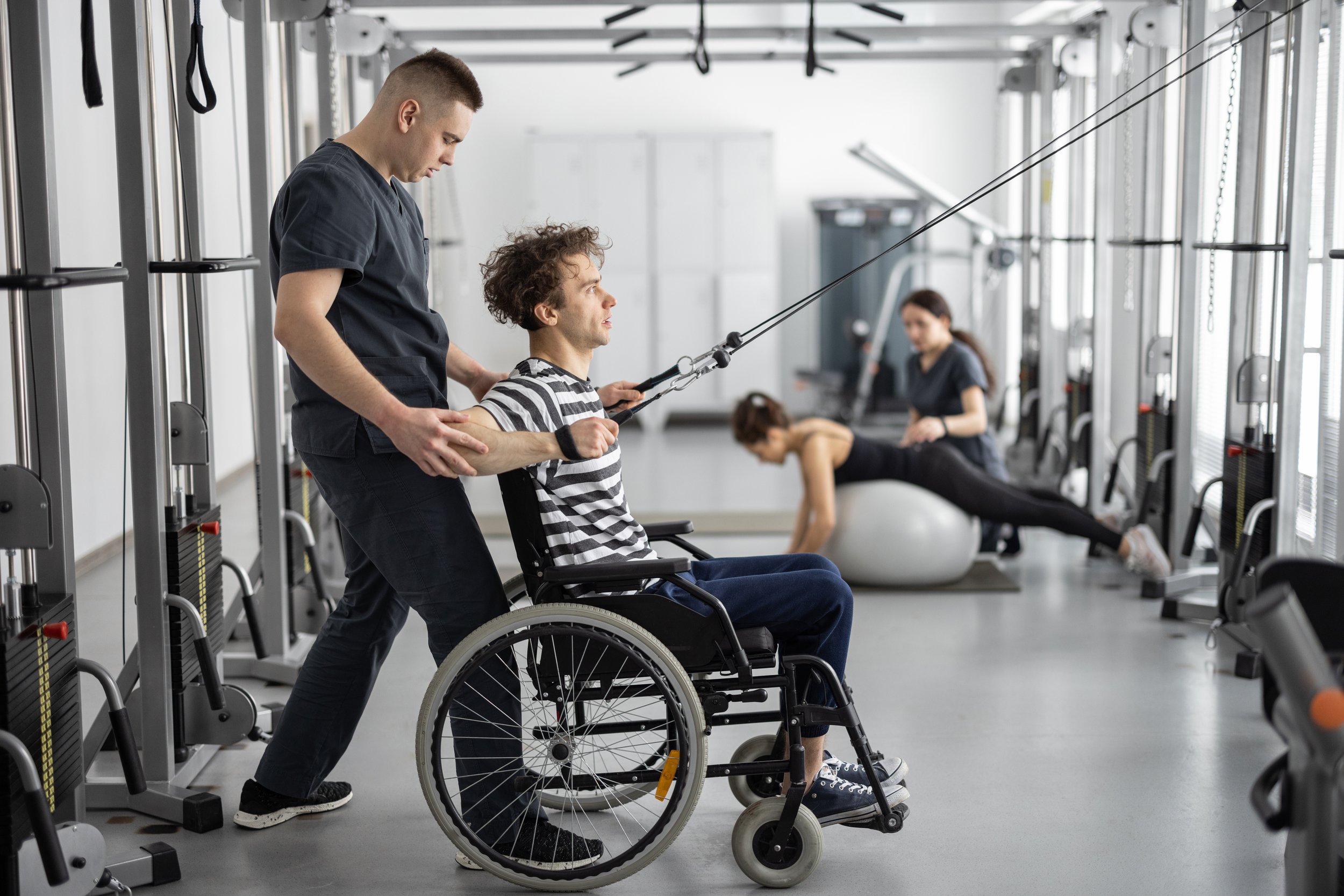Articles
Filter by Topic
- Adaptive Sport 1
- Artificial Intelligence 1
- Bike Labyrinth 3
- Bone density 1
- Brachial Plexus 1
- Bridging the Gap 1
- Bridging the Gap 1
- Carbonhand 4
- Cardiovascular 1
- Client Stories 4
- Cognition 1
- Company Updates 3
- Decision Making 1
- Dementia 1
- Denervation 21
- Diabetic Foot 12
- Efficiency 1
- Electrotherapy 27
- Exercise Benefits 28
- FES Cycling 12
- Functional Electrical Stimulation (FES) 55
- Gait 2
- Goal Setting 5
- Grip 3
- Healthspan 2
- Indego 13
- Lifestyle 8
- Lower Motor Neuron 1
- Mobility 17
- Motivation 2
- NMES 1
- Nerve injury 1
- NexStride 1
- Occupational Therapy 1
- Orthotic 15
- PRAFO 22
- Pain 5
- Parkinsons 2
- Pressure Ulcers 10
- Product Updates 7
- RISE Stimulator 9
- Safety 2
- Sponsor 1
- Standing 4
- Stim2Go 2
- Stimulette den2x 5
- Support 1
- TENS 1
- Technology 17
- Tek RMD 21
Article Length
- 1 minute read 3
- 10 minute read 9
- 11 minute read 7
- 12 minute read 7
- 15 minute read 6
- 18 minute read 1
- 19 minute read 1
- 2 minute read 4
- 26 minute read 1
- 27 minute read 1
- 28 minute read 1
- 3 minutes read 9
- 4 minute read 34
- 5 Minute read 12
- 6 minute read 6
- 7 minute read 13
- 8 minute read 6
- 9 minute read 3
- FES 2
- FoG 1
- PRAFO 1
- Seven Minute Read 1
- awareness 1
- carbonhand 2
- cognitive 1
- cues 1
- freezing gait 1
- freezing of gait 1
- gait 1
- neurological 1
- neuroplasticity 1
- nexstride 2
- occupational therapy 1
- occupational therapy day 1
- orthopaedics 1
- orthotic 1
- parkinson's 1
- pressure 1
- pressure relief 1
- prevention 1
- rehabilitation 2
- stroke 1
- ulcers 1
- world stroke day 1
FES Cycling vs. Passive Movement Training: The Pros and Cons
In the world of neurorehabilitation, two approaches have emerged as prominent tools for helping patients regain mobility and function: Functional Electrical Stimulation (FES) Cycling and Passive Movement Training (PMT). While both have their place in rehabilitation settings, understanding their distinct benefits and limitations is crucial for healthcare professionals and patients alike. PMT, utilising motorized bikes like the Thera or MOTOmed, has long been a staple in hospitals and homes due to its ease of use and accessibility. However, the integration of electrical stimulation in FES Cycling has opened new doors in rehabilitation, particularly for those with spinal cord injuries, stroke, cerebral palsy, and multiple sclerosis. With over three decades of research backing its efficacy, FES Cycling represents a significant advancement in rehabilitation technology – but what makes it truly different from traditional PMT, and why should clinicians and patients take notice? Let's delve into the science behind these approaches and explore their comparative benefits for patient outcomes.
How does the Tek RMD compare to other mobility devices on the UK market?
The Tek RMD distinguishes itself from other mobility devices through its unique design philosophy, functionality, and target user needs. This doesn't mean that it is the perfect choice for everyone. Individuals with weak or paralysed limbs will ultimately have different physical abilities and functional goals. The Tek RMD allows individuals who are suitable to use it, to stand and move in their environment and to do this in a way that will enable them to do more than if they just were using a standing frame. They can stand for lengthy periods, interact at eye level with others and uniquely engage in their environment. We know that standing is good for health but most candidates for the Tek RMD or standing wheelchair want to do more.
Choosing the right product requires thoughtful consideration. It’s important to assess each option’s physical suitability while carefully evaluating its strengths and weaknesses in relation to the user’s functional goals.
Embracing AI: Discover the RISE Stimulator with Our Innovative Chatbot
Consider this scenario: You're curious about the RISE Stimulator because you've heard it's effective for treating denervated muscles and you want to learn more.
It's evening, our office is closed, and you don't feel like sifting through numerous web pages to find the information you need. Would you trust a chatbot to provide the answers you're looking for?
Try out our chat bot and let us know what you think
Measuring performance in spinal cord injury rehabilitation: New possibilities?
Many of us today walk around or exercise with products that sense many aspects of our daily activity. Smartphones and sensor developments mean that we can be more in tune with what is happening to our health and fitness. My Suunto watch monitors my heart rate and heart rate variability, blood oxygenation, skin temperature and activities in many ways. It can nudge me to exercise more, tell me how I recovered from exercise and alert me to how well or how badly I am sleeping.. I personally do like having these insights, but of course, some people will hate the idea of this.
The smartwatch and related sensor technologies have opened up some new possibilities. In this article, im going beyond the smartwatch of today and take a look at what additional sensor technologies might assist us with spinal cord injury rehabilitation in the near future. In particular, we take a look at two sensor areas that have grown in popularity with elite athletes - Muscle oxygen sensing and Lactate sensing. If you want to know why, then read on.
The challenge of equipment selection for disabled clients
This article offers a detailed guide to adaptive equipment procurement after a spinal cord injury or disability. It emphasises the significance of initial assessment, research, and involving healthcare professionals, family, and caregivers. It also covers vendor reliability, financial aspects, equipment trial, customisation, training, maintenance, reassessment, community support, and embracing new technologies. Overall, the holistic approach aims to ensure a positive outcome for individuals needing adaptive equipment.
How are spinal cord injuries classified?
A spinal cord injury can be a life-changing event that no one is ever prepared for. Medical science has learned a great deal about how to treat the short-term consequences of a spinal cord injury. In the longer term, the imperative is to recover whatever function can be recovered through focusing on rehabilitation. Assistive technology can help to compensate for function that cannot be recovered. By preventing complications and striving for health, individuals can expect to enjoy good quality and length of life.
The mindset, attitudes and beliefs of the injured person and those around them will have a great impact on their potential for recovery, but there are limits to how far ‘belief’ will take them. Just believing that something is possible is not enough to make it so. We live in an age when technology, therapy and medical science can help individuals recover more function or at least remain healthier than would have seemed impossible just a few years ago. Whilst there is no cure yet for spinal cord injury, this no longer seems an impossible dream.
Every spinal cord-injured person faces a different challenge as they essentially have injuries with somewhat different characteristics. To deal with this, medical science has sought to find a way to classify spinal cord injuries in a way that helps to guide treatment, and to some extent, define the expectations for recovery. This article examines how spinal cord injuries are classified.






